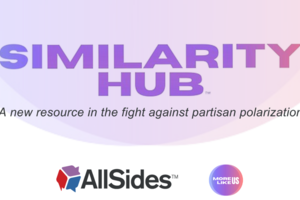Surveys Suggest Most Democrat Voters are Moderate, Care About American Ideals

Some may conflate the Democratic Party with a party of the far left, represented by politicians like Bernie Sanders and Alexandria Ocasio-Cortez. Yet surveys show a much more moderate Democratic Party that cares deeply about foundational American principles and are proud to be American. The majority of Democrats view themselves in moderate ways and vote in relatively moderate ways, too.
Democrats agree with conservatives more than one might think, especially on American principles and feelings toward the country. A recent report by Harvard’s Carr Center for Human Rights found the following:
Additionally, according to the Hidden Tribes report from the research group More In Common, more than 70 percent of “traditional liberals” believe that race should not be a factor in college admissions and think that political correctness is a problem.
The 2020 election highlights this moderate streak among Democrats. It helps explain why even in California — widely seen as one of the most liberal states in the country — progressive measures like the reinstatement of affirmative action and the proposal to classify Uber and Lyft workers as independent contractors failed.
President-elect Joe Biden, who was one of the most moderate Democrats running in 2020, ultimately won the party nomination in spite of early defeats in states like Iowa. Biden’s early nominees for senior advisor and Cabinet roles are mostly veterans of the Clinton and Obama administrations, who are generally seen more as center-left professionals rather than social justice activists.
Similar patterns held in the 2018 midterm elections. As David Brooks wrote in The New York Times, Democratic primary voters “massively rejected almost all of the nearly 80 Sanders-like insurgents the left put up to challenge more moderate incumbents in primaries.” The moderate New Democrat Coalition is a caucus of center-left House Democrats comprised of 104 House members before the most recent election. This made it the largest ideological caucus in the Democratic Party. Its website strikes moderate tones, noting it is “committed to pro-economic growth, pro-innovation, and fiscally responsible policies” and “seeking to bridge the gap between left and right.”
Certain Senate Democrats — especially Joe Manchin of West Virginia and Kyrsten Sinema of Arizona — even show conservative tendencies. Analyzing the last two Congresses, both of them voted in line with President Trump’s positions more than half of the time. They both have to appeal to an electorate that is more conservative than the country as a whole, particularly in West Virginia.
Indeed, conservatives and moderates made up a combined 51 percent of the Democratic Party’s electorate, according to Pew Research Center at the start of 2020.
So why is the far left sometimes confused with Democrats as a whole? It is true that liberalism has grown in strength. That same Pew survey mentioned earlier shows that in 2000, conservatives and moderates accounted for a larger 68 percent of the Democratic Party. The shift toward a greater share of liberals has been steady for the past couple of decades.
There are arguments that incentives for media across the political spectrum encourage extreme voices.
Conservative commentator Jim Geraghty has argued in National Review that there are incentives for liberal opinion leaders to push the media toward highlighting the extremes. Geraghty says the goals of Democratic politicians and left-leaning media outlets diverge: “Democratic officeholders thrive by getting as many people to vote for them as possible — which usually means avoiding controversy”, while “liberal opinion leaders thrive by getting people to pay attention to their ideas and discuss them — which usually means courting and cultivating controversy.”
Meanwhile, conservative media is sometimes interested in portraying Democrats negatively and in extreme ways. Highlighting the loud and extreme is rewarded with more clicks and shares, while moderation does not attract much attention and hype.
This distorted media-driven impression of the Democratic Party likely affects how it is viewed by the electorate. But this is a twisted representation of reality not corresponding to the actual state of affairs.
Democratic voters and politicians often show moderate tendencies, regardless of the stories of the extremes that often get more attention.
Sukhayl Niyazov is an independent author and volunteer at Braver Angels. His work has been published in The National Interest, Human Events, Global Policy, Areo, Towards Data Science, and other publications. Sukhayl has a Center bias.
This piece was edited by AllSides.com Managing Editor Henry A. Brechter (Center bias), and was reviewed by James Coan (Center) of Braver Angels.

April 25th, 2024


April 24th, 2024

April 24th, 2024